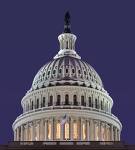 S.3251, “Improving Energy Efficiency and Renewable Energy Use By Federal Agencies Act of 2010”, is scheduled to get its first major action of this Congress on June 15 in hearings scheduled by the Senate Subcommittee on Energy. The bill, introduced in April by Thomas Carper (D-DE), includes provisions that mandate the use of “computer hardware, energy efficiency software, and power management tools” to reduce power consumption in the government’s fleet of personal computers.
S.3251, “Improving Energy Efficiency and Renewable Energy Use By Federal Agencies Act of 2010”, is scheduled to get its first major action of this Congress on June 15 in hearings scheduled by the Senate Subcommittee on Energy. The bill, introduced in April by Thomas Carper (D-DE), includes provisions that mandate the use of “computer hardware, energy efficiency software, and power management tools” to reduce power consumption in the government’s fleet of personal computers.
That’s right: SEC. 6. ADOPTION OF PERSONAL COMPUTER POWER SAVINGS TECHNIQUES BY FEDERAL AGENCIES only mentions personal computers, not datacenters. We do know that the Congress is taking an interest in the data center plans of individual agencies, and you still have to worry about the Presidential Order. So I wouldn’t rest easy if I were running a federal datacenter these days: if aren’t already three-quarters of the way through your brief on how you are going to improve operating efficiency in the next 3 years by a factor of two, you are way behind.
There are other parts of the bill that should apply to federal data and HPC centers. The bill calls on the Sec. of Energy to create a federal energy management and data collection standard, includes other language on the metering and management of federal buildings, and sets the bar under which costs for renewable energy purchase agreements must pass (not more than 110% of the cost of the power currently being supplied). The bill also establishes a revolving fund to enable agencies to make modifications to their facilities in support of the aims of the bill.
(1) IN GENERAL.—The Secretary of Energy shall establish a Federal facility energy efficiency and renewable energy projects fund program under which the Secretary shall make loans to Federal agencies to assist the agencies in reducing energy use and related purposes, as determined by the Secretary.
Interestingly, the bill also would allow agencies to keep any funds they free up by reducing electricity costs. The money involved is serious: the federal government is the largest consumer of energy in the United States, and in 2008 the government’s power bill was $24.5B, with $7 billion of that going to operate federal buildings and the assets within them.
Despite that, or perhaps because of it, I seriously doubt that particular provision will make it through reconciliation, if it even gets that far. A bill with similar aims was introduced last year (S. 1830:Federal Agency Energy Efficiency Improvement Act of 2009) and, although it is technically still alive, appears to be abandoned after it was reported to committee.




I was interested to note recently that the UK’s Department for Energy and Climate Change (DECC) now publish their energy use in real time on their website. There has been a big move of late towards greater transparency in UK government about departmental energy use. It will be interesting to see if the US goes down a similar route.
The Government Departments in the UK are leading the way in Energy Saving initiatives. It is so important that these departments practice what they preach and these changes can make a real impact.